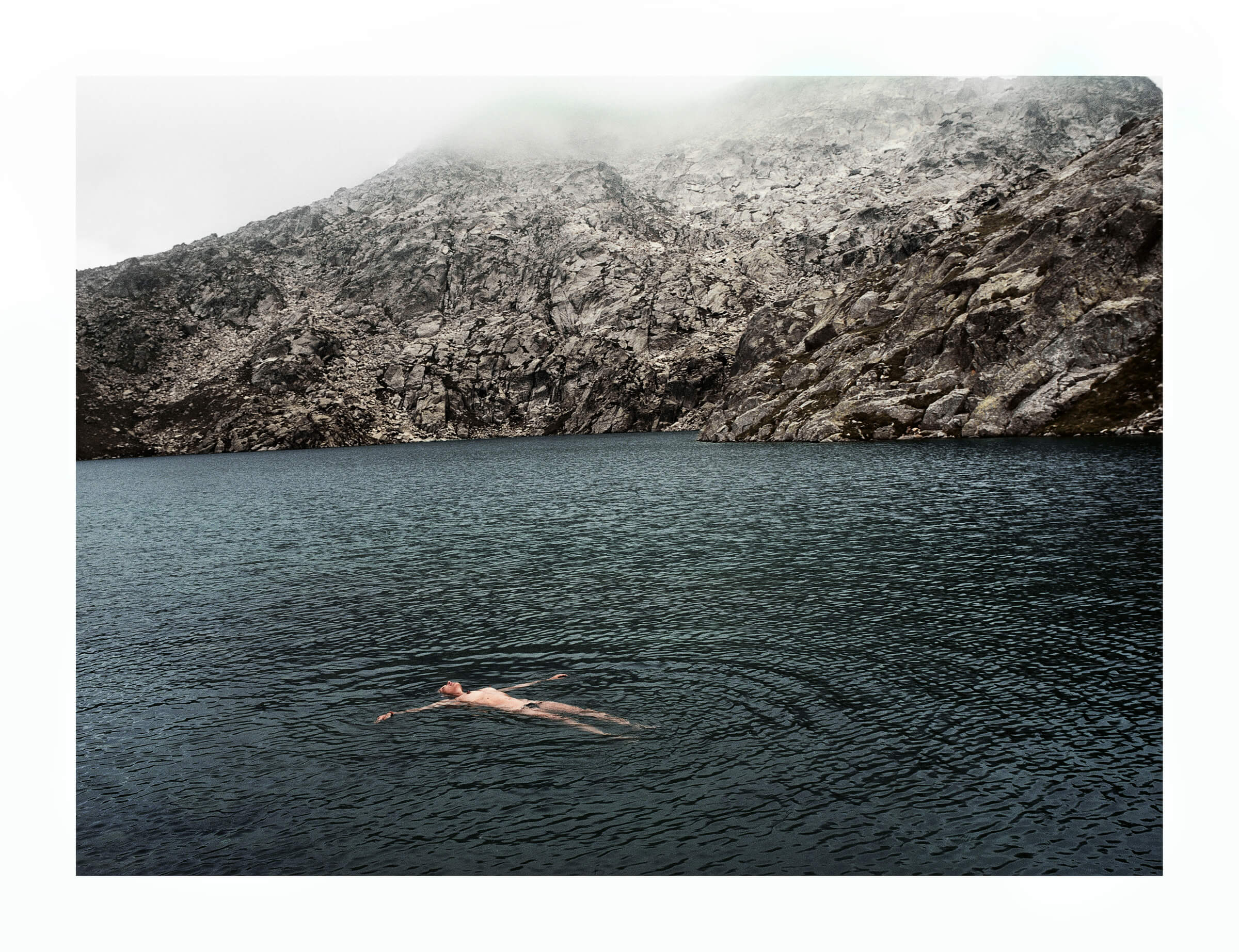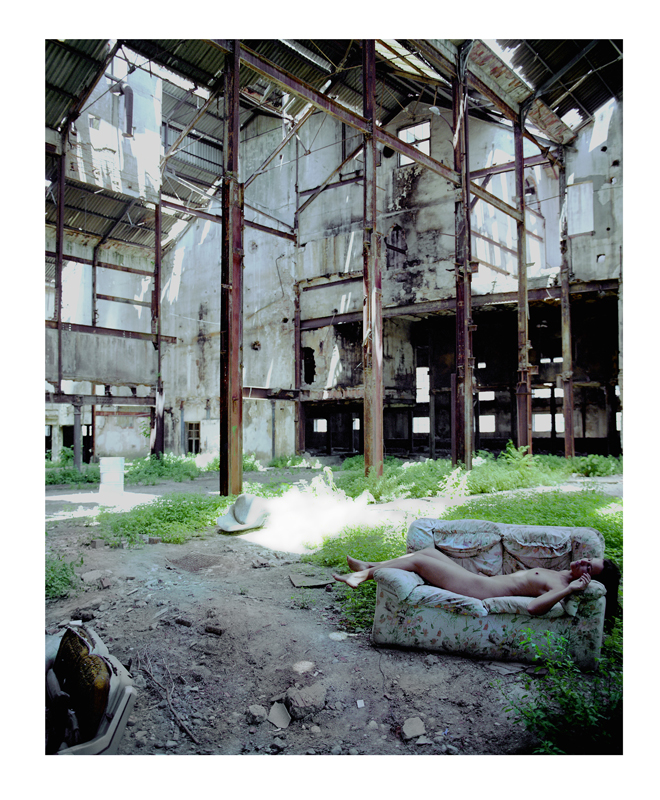OPHELIA
Photography
2014















The Pre-Raphaelites , association founded in 1848 by W. Holman, J. E. Millais and Dante Gabriel Rossetti with Ruskin's writings that defined them as "Modern Painters", were determined to demonstrate their conception of aesthetics related to ethics , the defense of man and nature as its original environment before the industry maelstrom.. The name "Ophelia" appears to be inspired by the Greek "I ofeleía" (relief, aid).Near Ewen (England), in a backwater of the Hogsmill river lush environment is bright in color. There John Everett Millais, Pre-Raphaelite painter, painted in 1851 Ophelia and curiously this is not oppressive environment despite witnessing the tragedy. Also the poetic image of Ophelia is far from that corresponding to the macabre reality of a drowning.
A young drowned was not a very common subject in mid-nineteenth century paintings. This allowed the artist to experience the endless possibilities related to the absence of grace and poise.
When Ophelia dies, passing "from her melodious lay to Muddy death", she becomes an impossible object of desire. That's Ophelia for Hamlet: the ideal of feelings.
In her delirium, Ofelia wanders by a lake, picking flowers, and dies by drowning in the muddy waters. This image symbolizes the ultimate madness, disease of the cerebellum, which is the nucleus of the neurospinal system, the sensations produced by dementia in those organs are transmitted to more sympathetic with it. Such transmission and sympathy purely organic cannot be hidden nor mastered when the dominator of sensations has died : reason. If it coincide in dementia sensation with memory, it's not memory that determines sensation, this is not a reminder of reality.
The death of Ophelia in Shakespeare's play is a perpetual source of speculative exercise, since the tragic fact does not even happen on stage. It is narrated by the mouth of Gertrude, who explains that she has unwittingly fallen into the river and in her delirium has been carried away:
"... There, on the pendent boughs her coronet weeds
Clambering to hang, an envious sliver broke;
When down her weedy trophies and herself
Fell in the weeping brook. Her clothes spread wide;
And, mermaid-like, awhile they bore her up:
Which time she chanted snatches of old tunes;
As one incapable of her own distress,
Or like a creature native and indued
Unto that element: but long it could not be
Till that her garments, heavy with their drink,
Pull'd the poor wretch from her melodious lay
To muddy death."
William Shakespeare, Hamlet, 4, VII
"In the deep waters that cradle the stars, white, candid, Ophelia floats like a great lily floats so slowly, lying in her veils ...".(Rimbaud)
A young drowned was not a very common subject in mid-nineteenth century paintings. This allowed the artist to experience the endless possibilities related to the absence of grace and poise.
When Ophelia dies, passing "from her melodious lay to Muddy death", she becomes an impossible object of desire. That's Ophelia for Hamlet: the ideal of feelings.
In her delirium, Ofelia wanders by a lake, picking flowers, and dies by drowning in the muddy waters. This image symbolizes the ultimate madness, disease of the cerebellum, which is the nucleus of the neurospinal system, the sensations produced by dementia in those organs are transmitted to more sympathetic with it. Such transmission and sympathy purely organic cannot be hidden nor mastered when the dominator of sensations has died : reason. If it coincide in dementia sensation with memory, it's not memory that determines sensation, this is not a reminder of reality.
The death of Ophelia in Shakespeare's play is a perpetual source of speculative exercise, since the tragic fact does not even happen on stage. It is narrated by the mouth of Gertrude, who explains that she has unwittingly fallen into the river and in her delirium has been carried away:
"... There, on the pendent boughs her coronet weeds
Clambering to hang, an envious sliver broke;
When down her weedy trophies and herself
Fell in the weeping brook. Her clothes spread wide;
And, mermaid-like, awhile they bore her up:
Which time she chanted snatches of old tunes;
As one incapable of her own distress,
Or like a creature native and indued
Unto that element: but long it could not be
Till that her garments, heavy with their drink,
Pull'd the poor wretch from her melodious lay
To muddy death."
William Shakespeare, Hamlet, 4, VII
"In the deep waters that cradle the stars, white, candid, Ophelia floats like a great lily floats so slowly, lying in her veils ...".(Rimbaud)
Los prerrafaelitas , asociación fundada en 1848 por W. Holman , J. E. Millais y Dante Gabriel Rosseti junto con los escritos de Ruskin que les define como “Modern Painters” , estaban empeñados en demostrar su concepción de la estética vinculada a la ética, la defensa del hombre y la naturaleza como su medio original ante la vorágine industrial.
El nombre "Ophelia" parece estar inspirado en el griego "he ofeleía" (el socorro, la ayuda).Cerca de Ewen (Inglaterra) ,en un remanso del río Hogsmill el entorno es frondoso y brillante en colorido. Allí John Everett Millais , pintor prerrafaelita , pintó en 1851 Ofelia y curiosamente ese entorno no resulta opresivo a pesar de ser testigo de la tragedia. También la imagen poética de Ofelia está muy alejada de la que correspondería a la macabra realidad de un ahogamiento.
Una joven ahogada no era muy habitual en los cuadros de mediados del siglo XIX. Ello brindó al artista innumerables posibilidades de experimentar lo relacionado con la ausencia de gracia y equilibrio.
Cuando Ophelia muere, pasando "de su melodioso canto a su turbia muerte" ("from her melodious lay to Muddy death"), se convierte en un imposible objeto de deseo. Eso es Ophelia para Hamlet: el ideal del sentimiento.
En su desvarío, Ophelia vagabundea junto a un lago, recogiendo flores, y muere ahogada en las fangosas aguas. Esta imagen simboliza la locura por excelencia , enfermedad del cerebelo, que es el núcleo del sistema neuroespinal , las sensaciones producidas por la demencia en esos órganos se transmiten a los más simpáticos con ello .Esa transmisión y esa simpatía puramente orgánicas no pueden ocultarse o dominarse cuando ha muerto el dominador de las sensaciones : la razón. Si coincide en la demencia la sensación con el recuerdo, no es el recuerdo el que determina la sensación, no es ésta un recuerdo de la realidad.
La muerte de Ophelia en la obra de Shakespeare es fuente de un perpetuo ejercicio especulativo, pues el hecho luctuoso no sucede en escena. Es narrado por boca de Gertrudis, quien explica que ha caído involuntariamente al río y en su desvarío se ha dejado llevar: “…Llegada que fue, se quitó la guirnalda, y queriendo subir a suspenderla de los pendientes ramos; se troncha un vástago envidioso, y caen al torrente fatal, ella y todos sus adornos rústicos. Las ropas huecas y extendidas la llevaron un rato sobre las aguas, semejante a una sirena, y en tanto iba cantando pedazos de tonadas antiguas, como ignorante de su desgracia, o como criada y nacida en aquel elemento. Pero no era posible que así durase por mucho espacio. Las vestiduras, pesadas ya con el agua que absorbían la arrebataron a la infeliz; interrumpiendo su canto dulcísimo, la muerte, llena de angustias”.
William Shakespeare, Hamlet; 4; VII
“En las aguas profundas que acunan las estrellas , blanca y cándida , Ofelia flota como un gran lirio , flota tan lentamente , recostada en sus velos…”. (Rimbaud)
El nombre "Ophelia" parece estar inspirado en el griego "he ofeleía" (el socorro, la ayuda).Cerca de Ewen (Inglaterra) ,en un remanso del río Hogsmill el entorno es frondoso y brillante en colorido. Allí John Everett Millais , pintor prerrafaelita , pintó en 1851 Ofelia y curiosamente ese entorno no resulta opresivo a pesar de ser testigo de la tragedia. También la imagen poética de Ofelia está muy alejada de la que correspondería a la macabra realidad de un ahogamiento.
Una joven ahogada no era muy habitual en los cuadros de mediados del siglo XIX. Ello brindó al artista innumerables posibilidades de experimentar lo relacionado con la ausencia de gracia y equilibrio.
Cuando Ophelia muere, pasando "de su melodioso canto a su turbia muerte" ("from her melodious lay to Muddy death"), se convierte en un imposible objeto de deseo. Eso es Ophelia para Hamlet: el ideal del sentimiento.
En su desvarío, Ophelia vagabundea junto a un lago, recogiendo flores, y muere ahogada en las fangosas aguas. Esta imagen simboliza la locura por excelencia , enfermedad del cerebelo, que es el núcleo del sistema neuroespinal , las sensaciones producidas por la demencia en esos órganos se transmiten a los más simpáticos con ello .Esa transmisión y esa simpatía puramente orgánicas no pueden ocultarse o dominarse cuando ha muerto el dominador de las sensaciones : la razón. Si coincide en la demencia la sensación con el recuerdo, no es el recuerdo el que determina la sensación, no es ésta un recuerdo de la realidad.
La muerte de Ophelia en la obra de Shakespeare es fuente de un perpetuo ejercicio especulativo, pues el hecho luctuoso no sucede en escena. Es narrado por boca de Gertrudis, quien explica que ha caído involuntariamente al río y en su desvarío se ha dejado llevar: “…Llegada que fue, se quitó la guirnalda, y queriendo subir a suspenderla de los pendientes ramos; se troncha un vástago envidioso, y caen al torrente fatal, ella y todos sus adornos rústicos. Las ropas huecas y extendidas la llevaron un rato sobre las aguas, semejante a una sirena, y en tanto iba cantando pedazos de tonadas antiguas, como ignorante de su desgracia, o como criada y nacida en aquel elemento. Pero no era posible que así durase por mucho espacio. Las vestiduras, pesadas ya con el agua que absorbían la arrebataron a la infeliz; interrumpiendo su canto dulcísimo, la muerte, llena de angustias”.
William Shakespeare, Hamlet; 4; VII
“En las aguas profundas que acunan las estrellas , blanca y cándida , Ofelia flota como un gran lirio , flota tan lentamente , recostada en sus velos…”. (Rimbaud)